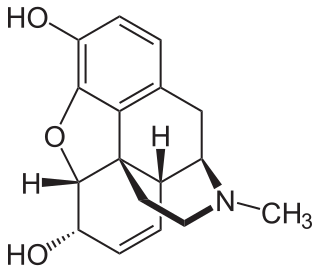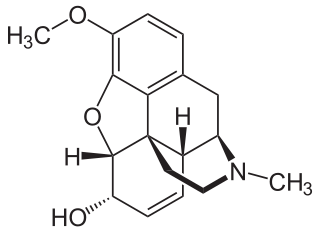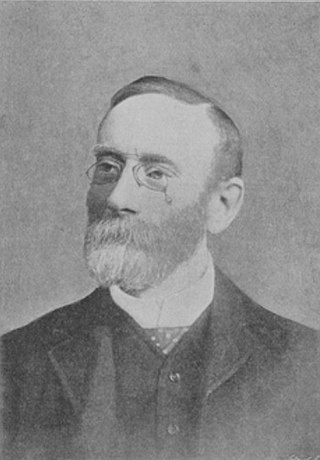
Morphine, formerly also called morphia, is an opiate that is found naturally in opium, a dark brown resin produced by drying the latex of opium poppies. It is mainly used as an analgesic. There are numerous methods used to administer morphine: oral; sublingual; via inhalation; injection into a muscle, injection under the skin, or injection into the spinal cord area; transdermal; or via rectal suppository. It acts directly on the central nervous system (CNS) to induce analgesia and alter perception and emotional response to pain. Physical and psychological dependence and tolerance may develop with repeated administration. It can be taken for both acute pain and chronic pain and is frequently used for pain from myocardial infarction, kidney stones, and during labor. Its maximum effect is reached after about 20 minutes when administered intravenously and 60 minutes when administered by mouth, while the duration of its effect is 3–7 hours. Long-acting formulations of morphine are sold under the brand names MS Contin and Kadian, among others. Generic long-acting formulations are also available.

Opium is dried latex obtained from the seed capsules of the opium poppy Papaver somniferum. Approximately 12 percent of opium is made up of the analgesic alkaloid morphine, which is processed chemically to produce heroin and other synthetic opioids for medicinal use and for the illegal drug trade. The latex also contains the closely related opiates codeine and thebaine, and non-analgesic alkaloids such as papaverine and noscapine. The traditional, labor-intensive method of obtaining the latex is to scratch ("score") the immature seed pods (fruits) by hand; the latex leaks out and dries to a sticky yellowish residue that is later scraped off and dehydrated.

The term narcotic originally referred medically to any psychoactive compound with numbing or paralyzing properties. In the United States, it has since become associated with opiates and opioids, commonly morphine and heroin, as well as derivatives of many of the compounds found within raw opium latex. The primary three are morphine, codeine, and thebaine.

Laudanum is a tincture of opium containing approximately 10% powdered opium by weight. Laudanum is prepared by dissolving extracts from the opium poppy in alcohol (ethanol).

Paregoric, or camphorated tincture of opium, also known as tinctura opii camphorata, is a traditional patent medicine known for its antidiarrheal, antitussive, and analgesic properties.

Loperamide, sold under the brand name Imodium, among others, is a medication of the opioid receptor agonist class used to decrease the frequency of diarrhea. It is often used for this purpose in irritable bowel syndrome, inflammatory bowel disease, short bowel syndrome Crohn's disease and ulcerative colitis. It is not recommended for those with blood in the stool, mucus in the stool, or fevers. The medication is taken by mouth.

Hydromorphone, also known as dihydromorphinone, and sold under the brand name Dilaudid among others, is a morphinan opioid used to treat moderate to severe pain. Typically, long-term use is only recommended for pain due to cancer. It may be used by mouth or by injection into a vein, muscle, or under the skin. Effects generally begin within half an hour and last for up to five hours. A 2016 Cochrane review found little difference in benefit between hydromorphone and other opioids for cancer pain.
A panacea is any supposed remedy that is claimed to cure all diseases and prolong life indefinitely. Named after the Greek goddess of universal remedy Panacea, it was in the past sought by alchemists in connection with the elixir of life and the philosopher's stone, a mythical substance that would enable the transmutation of common metals into gold. Through the 18th and 19th centuries, many "patent medicines" were claimed to be panaceas, and they became very big business. The term "panacea" is used in a negative way to describe the overuse of any one solution to solve many different problems, especially in medicine. The word has acquired connotations of snake oil and quackery.
Brompton cocktail, sometimes called Brompton mixture or Brompton's cocktail, was an elixir meant for use as a pain suppressant dosed for prophylaxis. Made from morphine or diacetylmorphine (heroin), cocaine, highly-pure ethyl alcohol, and sometimes with chlorpromazine (Thorazine) to counteract nausea, it was given to terminally-ill individuals to relieve pain and promote sociability near death. A common formulation included "a variable amount of morphine, 10 mg of cocaine, 2.5 mL of 98% ethyl alcohol, 5 mL of syrup BP and a variable amount of chloroform water." Brompton's cocktail was given most in the mid twentieth century. It is now considered obsolete.

Dipipanone, sold under the brand names of Pipadone and Diconal is a strong opioid analgesic drug, used for acute pain by mouth (PO) for adults. It is often used in instances where morphine is indicated but cannot be used due to the patient being allergic to morphine. In analgesic potency 25 mg dipipanone is approximately equivalent to 10 mg morphine.
Papaveretum (BAN) is a preparation containing a mixture of hydrochloride salts of opium alkaloids. Since 1993, papaveretum has been defined in the British Pharmacopoeia (BP) as a mixture of 253 parts morphine hydrochloride, 23 parts papaverine hydrochloride, and 20 parts codeine hydrochloride. It is commonly marketed to medical agencies under the trade name Omnopon.

Codeine is an opiate and prodrug of morphine mainly used to treat pain, coughing, and diarrhea. It is also commonly used as a recreational drug. It is found naturally in the sap of the opium poppy, Papaver somniferum. It is typically used to treat mild to moderate degrees of pain. Greater benefit may occur when combined with paracetamol (acetaminophen) or a nonsteroidal anti-inflammatory drug (NSAID) such as aspirin or ibuprofen. Evidence does not support its use for acute cough suppression in children. In Europe, it is not recommended as a cough medicine in those under 12 years of age. It is generally taken by mouth. It typically starts working after half an hour, with maximum effect at two hours. Its effects last for about four to six hours. Codeine exhibits abuse potential similar to other opioid medications, including a risk of addiction and overdose.

Dr. John Collis Browne MRCS (1819–1884) was a British Army officer, inventor of items for yachts and the originator of the medicine Chlorodyne.

MacFarlan Smith is a pharmaceutical manufacturing company based in Edinburgh, Scotland, founded in 1815. After its sale from Johnson Matthey in June 2022 to Altaris Capital Partners, Macfarlan Smith rebranded as Veranova. Veranova is a CDMO specialising in the development and manufacturing of specialist and complex active pharmaceutical ingredients, or APIs. It has facilities across Europe and North America.
Eileen Minnie Brooke was a British statistician and health policy professional.

Arthur Wynne Foot was an Irish doctor, professor of medicine, and an entomologist.
Alexander Crombie was a Scottish surgeon who joined the Indian Medical Service and became resident surgeon at Calcutta Medical College, India, where he became professor of materia medica.
Colonel Walter Gawen King was a British Indian army surgeon who served in the Madras Presidency as a sanitary officer and introduced a number of public health measures for the first time in India. The King Institute of Preventive Medicine and Research in Chennai was named in his honour in 1905.
Triple dye is an antiseptic initially used for the treatment of burn victims during the Second World War. It later came into use in general medicine. A commercial implementation was as a constituent of "over-the-counter" antiseptic soaps and handwashes.














